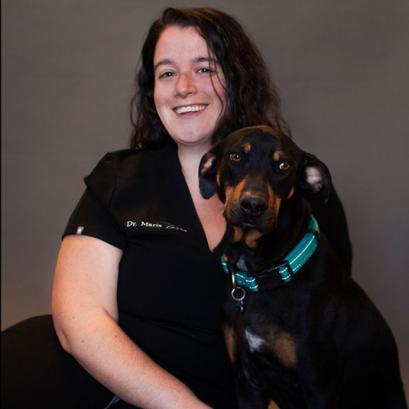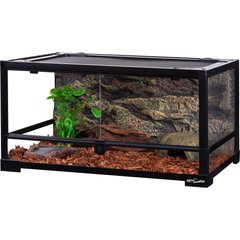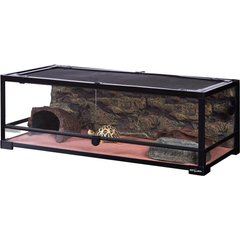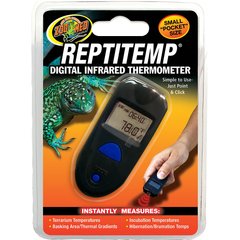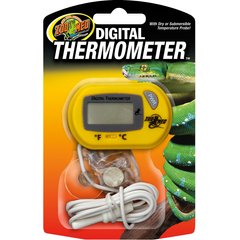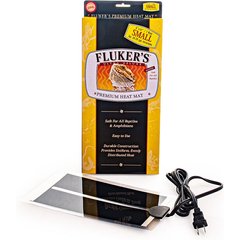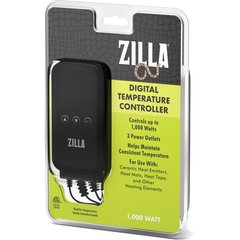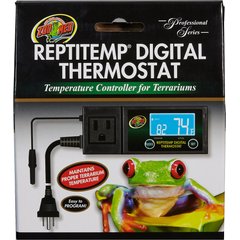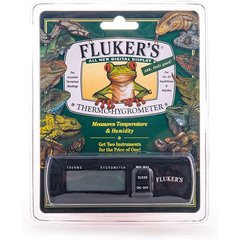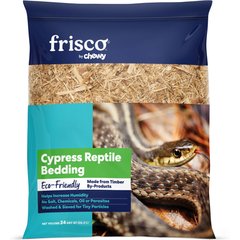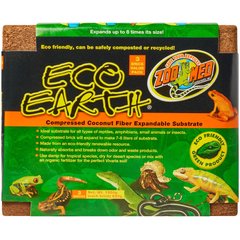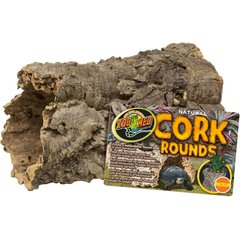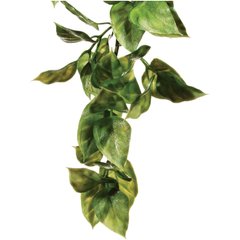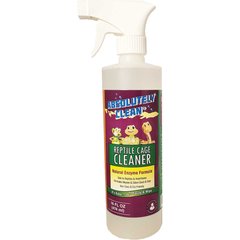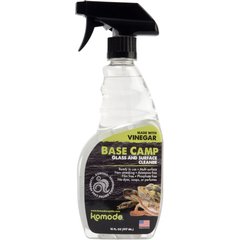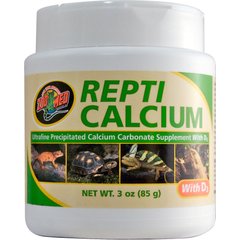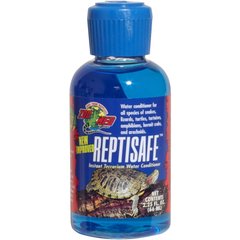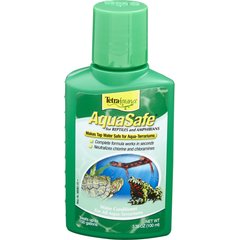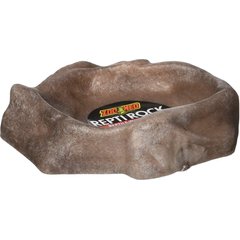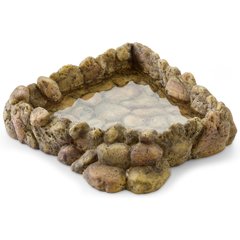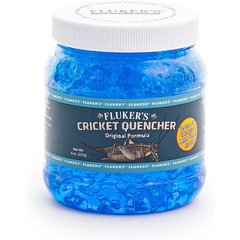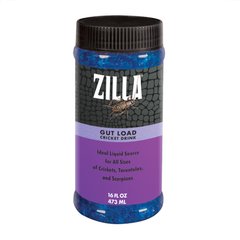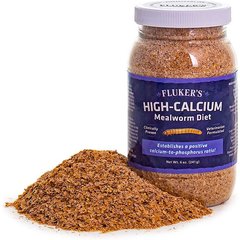Pet Toad Care Sheet
Saccobent/iStock / Getty Images Plus via Getty Images
Toad Species Overview
Toads are a common name for frogs that have dry, bumpy skin and stout bodies with short legs. Most toads are members of the family Bufonidae, and they can be found in a wide range of geographic locations. This care sheet outlines basic care needs for a variety of pet toad species, including:
-
African bouncing toads
-
Egyptian toads
-
Moroccan green toads
-
Southern toads
-
Yellow belly toads
-
Reticulated toads
-
Lemon toads
-
Bumblebee toads
-
Malayan forest toads
Toads are amphibians, not reptiles. However, like reptiles, amphibians are ectothermic (or “cold-blooded”) animals that rely on external heat sources to regulate their body temperature.
Some toad species are silent, while others are highly vocal. Certain species will communicate with each other through calls that sound like chirps, snores, sneezes, or even a sheep’s bleat.
Toads can serve as great first-time pets. Be sure to check your state laws to ensure you can own at toad before purchasing one.
Most toads are nocturnal, meaning they are more active at night, and they will spend their days burrowed under the substrate, (bedding) in their tank.
Toads are intelligent animals that learn to recognize patterns and routines over time. Because of this, it’s best to feed toads at the same time every day rather than vary their feeding schedule.
Pet toads live significantly longer than wild toads.
Toad Characteristics
|
Difficulty of Care |
Intermediate |
|
Average Life Span |
Up to 10+ years with proper care, depending on species |
|
Average Adult Size |
1–6 inches, depending on species |
|
Diet |
Insectivore |
|
Minimum Habitat Size |
10- to 20-gallon tank for 2–6 adult toads, depending on species |
Pet Toad Handling
In general, toads don’t enjoy being held and should be handled only when necessary. Human skin has bacteria and oils that amphibians can absorb through their skin, leading to irritation and illness.
Note: If toads must be handled, they should only be touched with disposable, non-powdered gloves that have been moistened with dechlorinated water.
Toads have glands in their skin that can secrete toxins. Never let a toad’s secretions contact your eyes, mouth, or open wounds. Contact your medical provider if toad skin secretions accidentally come into contact with these areas.
A fine-mesh net can be used to move or block pet toads during routine habitat maintenance.
All toads are potential carriers of infectious diseases, including Salmonella bacteria, which is zoonotic (transmittable to humans). Pet parents should always wash their hands before and after handling their toad or its habitat’s contents.
Pet Toad Supply Checklist
To keep a toad happy and healthy, keep these basic supplies on hand:
-
Sphagnum moss
-
Under-tank heater (must be paired with thermostat)
-
Calcium supplement with vitamin D
-
Cricket keeper
-
Cricket food
-
Cricket quencher
-
Thermometers
-
Thermostat
-
Water mister
Pet Toad Habitat
Tanks for Pet Toads
At a minimum, a 10- to 20-gallon habitat can be used to house up to six adult toads (depending on species). All habitats should be well-ventilated and secured with a screened lid to prevent the toad from escaping. As a rule of thumb, each additional toad added to the habitat will need at least 5 extra gallons of tank space.
With proper care, most toads will reach their adult size within 6 to 18 months. Pet parents need to gradually increase the size of their pet toad’s enclosure as they grow and should always provide the largest habitat possible.
Can You Have Multiple Pet Toads in One Tank?
Most species of toads are social and thrive when housed together in small groups if the habitat is large enough. Pet parents should check with a veterinarian or do some species-specific research before deciding to house more than one toad in the same habitat.
Never keep different species of amphibians or other animals in the same habitat.
Male and female toads should not be kept in the same enclosure unless you’re prepared for them to breed. Female toads can lay hundreds of eggs at a time.
Temperature
The recommended temperature range for toads varies between species, but most toads do well in a habitat between 70–80 F. Nighttime temperatures can fall slightly below this range.
Check the temperatures of your toad’s habitat daily. Two thermometers—one in the warm area and one in the cool area—should be placed in the enclosure so that both zones can be checked at once.
A digital point-and-shoot thermometer can also be used to read habitat temperatures instantly.
Light and Heat Sources
Install an under-tank heating pad in your toad’s habitat to maintain the recommended temperature range within the tank.
The heating pad should cover no more than half of the enclosure’s floor to create cool and warm zone in the habitat. Under-tank heating pads must always be connected to a thermostat to prevent the toad from getting burned.
-
Avoid ceramic heat emitters, as they are too hot and will dry toads out.
-
Hot rocks should not be used because they can get too warm and may cause injury.
UV Light
Pet parents should use a low-level (2.0 or 5.0) fluorescent UVB bulb to provide their toad with 10–12 hours of UVB light daily to imitate natural sunlight. UVB bulbs must be turned off at night.
-
Replace bulbs every six months (even if they still emit light) as their potency wanes over time.
-
A day/night timer can make it easier to maintain a consistent day and night cycle.
Toad Tank Humidity
While humidity requirements vary between species, most toads thrive in humidity levels between 50 and 60%. Higher humidity levels of 70% or above can be fatal to toads.
To boost humidity levels, pet parents should mist their toad’s habitat daily with dechlorinated water. Since toads stay hydrated by absorbing water through their skin, they should always have access to a shallow bowl of dechlorinated water that’s wide enough for them to soak in.
Water bowls should be cleaned, disinfected, and refilled daily.
If humidity levels get too high, ensure the habitat is properly ventilated so that humid air can escape. The habitat’s humidity should be measured with a hygrometer, or humidity gauge, every day.
Substrate
The bottom of a toad’s habitat should be filled with at least 2 inches of substrate for burrowing and hiding. Coconut fiber, dampened sphagnum moss, leaf litter, and cypress mulch are all excellent choices.
The substrate on one side of the habitat should be moistened with dechlorinated water while the other side should be left dry so that the toad can choose.
When adding substrate to their toad’s habitat, pet parents should keep a few things in mind:
-
Avoid reptile carpet and artificial turf, which is too rough for a toad’s delicate skin.
-
Avoid gravel that’s small enough to be swallowed by a toad because it can cause life-threatening gastrointestinal (GI) tract obstruction if ingested.
- Avoid substrate made of small particles, such as sand or small bark chips, as these materials are indigestible and can also lead to GI tract obstruction if consumed.
Decor and Accessories
Hiding Areas
Toads need at least two hiding areas in their habitat—one kept on the warm side of the enclosure and one on the cooler side.
Aside from offering the toad some privacy, hideouts can help toads regulate their body temperature, as they give them a space away from the enclosure’s basking area.
Pet parents should monitor their toad’s behavior to be sure they are not hiding all the time, as they won’t have a chance to benefit from UV light exposure.
If more than one toad is housed in the same habitat, be sure to provide each toad with their own set of hiding places to limit territorial behavior.
Plants and Driftwood
Use live and/or artificial plants, branches, driftwood, terrarium leaves, and cork bark to add cover and create additional hiding places in your toad’s habitat.
How To Clean a Toad Tank
Spot-clean your toad’s habitat daily and remove any discarded food or droppings. Food and water dishes should also be cleaned and disinfected daily.
A toad’s habitat needs to be thoroughly cleaned and disinfected at least once a month with either an amphibian-safe habitat cleaner or a 3% bleach solution.
Pet parents should always use powder-free latex gloves moistened with dechlorinated water when handling their toad to avoid harming the animal’s sensitive skin.
To clean a pet toad’s habitat, take these steps:
-
Using latex gloves moistened with dechlorinated water, move the toad to a secure habitat. Be sure to handle the toad gently to avoid harming its sensitive skin.
-
Remove any old substrate, decor, and accessories from the habitat.
-
Scrub the empty tank and any furnishings with an amphibian-safe habitat cleaner or 3% bleach solution. The bleach solution should stay on the habitat for at least 10 minutes to ensure that the surfaces are properly disinfected. If using a commercial habitat cleaner, follow the manufacturer's instructions.
-
Rinse the habitat and accessories thoroughly with dechlorinated water, making sure to remove any trace amounts or residual smells left by the cleaning agent or bleach solution.
-
Allow the habitat and its contents to dry completely before placing new substrate and clean accessories into the habitat.
-
Return the toad to the cleaned habitat. Always be sure to wash your hands thoroughly after handing a toad or its habitat’s contents.
Pet Toad Food
Toad Feeding Guidelines
-
Juvenile toads should be fed daily, while adults should be fed every other day.
-
Adult toads should be offered about three to six insects at each feeding session.
-
Young, small toads less than an inch long should only be offered small insects like wingless fruit flies and pinhead crickets.
-
Toads should be given a calcium supplement with vitamin D daily and a multivitamin/mineral supplement one to two times a week.
A well-balanced and nutritious diet for a toad consists of gut-loaded (recently fed) insects and worms, including:
-
Crickets
-
Roaches
-
Mealworms
-
Earthworms
-
Superworms
-
Calci-worms
-
Hornworms
-
Waxworms
Feed a variety of insects rather than the same ones every day. Feeding a toad the same food every day can lead to malnutrition.
Prey should be no larger than the width of the toad’s mouth.
Vitamin Supplements
Before feeding, pet parents should dust their toad’s insects with a powdered vitamin/mineral supplement. Toads need a calcium supplement with vitamin D and a multivitamin/mineral powder designed for amphibians.
To dust insects quickly and efficiently, place insects in a bag or disposable plastic container along with a powdered supplement. Then, shake the bag lightly until the insects are coated evenly in powder.
Clean, dechlorinated water should always be available and replaced daily.
Since toads absorb water through their skin to stay hydrated, their water dishes should be large and shallow enough to allow them to soak in them.
Food and water dishes should be cleaned and disinfected daily.
Do not use distilled water, which doesn’t include any of the vitamins, salts, or minerals that toads need to stay hydrated.
How To Gut-Load Insects
Gut-loading diets are fortified with vitamins and minerals to help provide optimal nutrition to the reptiles and amphibians that feed on them.
To gut-load prey, place insects in a container with a gut-loading diet that the bugs can gorge on. Insects should be gut-loaded for at least 24 to 72 hours before being dusted with a vitamin/mineral supplement and fed to a toad.
Pet Toad Care
Shedding
Amphibians shed, or “slough,” their skin regularly. Generally, healthy toads will shed their skin in one, complete piece.
Most toads will eat their dead skin after shedding it to absorb nutrients and to avoid predators.
Younger toads that are actively growing tend to shed more frequently than adults.
A toad’s skin may turn cloudy or milky in color when the animal is ready to shed.
Toads usually assume a crouching position while shedding.
Veterinary Care for Pet Toads
Annual Care
Toads should be seen by a veterinarian once annually. Use a secure transport carrier to move your toad. You will need pictures of their enclosure and all food and tank item’s packaging for your veterinarian to assess during the appointment.
Signs of a Healthy Toad
-
Clean, clear eyes
-
Intact, moist skin
-
Pink, clean oral cavity
-
Clear nostrils
-
Straight, smooth toes
-
Good appetite
-
Bright and alert
-
Able to hop and/or swim appropriately
When to Call a Vet
-
Eye discharge or a swollen or protruding eye
-
Lesion on skin
-
Red discoloration of limbs and bottom of toad
-
Oral lesions
-
Bent or broken toes or other limb bones
-
Dry skin
-
Lethargy
-
Lack of appetite
-
Nasal discharge
-
Trouble breathing
-
Rapid weight changes
Common Illnesses in Toads
-
Red leg
-
Chlamydia
-
Mycobacteria
-
Chytridiomycosis
-
Chromomycosis
-
Saprolegniasis
-
Intestinal obstruction
-
Parasites
-
Trauma
-
Nutritional deficiencies
Pet Toad FAQs
Can you have a toad as a pet?
Toads can be great pets to keep. Do not capture a wild toad that may carry parasites or be toxic if touched.
How long do pet toads live?
Pet toads live significantly longer than their wild brethren. While this varies quite a bit by species, most pet toads can live about 10 years!
What is the easiest toad to have as a pet?
The most recommended toad species for beginners is the American Toad. These toads are an easy size to handle, have hungry and curious natures, and are fun to interact with.
Do toads like to be petted?
Toads cannot be touched with bare hands. Toads have delicate and sensitive skin that absorbs more than most animal’s skins. This leaves them at risk of toxin exposure, even from freshly washed hands.
Can I keep a toad I found outside?
No. Wild toads may come with diseases or parasites, will be highly stressed by a change in their environment, and may be very dangerous to handle if identified incorrectly. Luckily, pet toads are usually very affordable and very easy to find from a pet store or a reptile expo!

